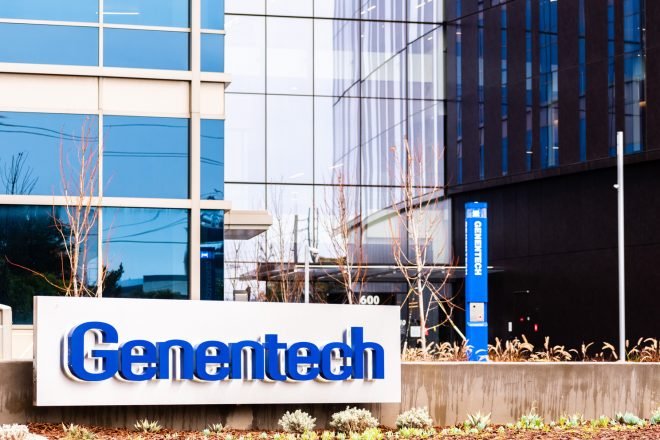Advertisment
Genentech announces data at EHA 2021 reinforcing efficacy of Venclexta combinations in chronic lymphocytic leukemia and acute myeloid leukemia

Genentech, a member of the Roche Group announced the latest data from three pivotal Phase III studies of Venclexta (venetoclax) – CLL14, MURANO and VIALE-A – to be presented at the European Hematology Association Virtual Congress, June 9-17 (EHA2021).
Long-term follow-up data from the CLL14 and MURANO studies support the primary analysis of Venclexta in chronic lymphocytic leukemia (CLL) and the possibility of tailoring treatment approaches based on genetic risk factors. Furthermore, the latest research shows the potential of minimal residual disease (MRD) as a key measure of disease response in CLL and acute myeloid leukemia (AML).
Four-Year Follow-Up Analysis of the Phase III CLL14 Study : This four-year post-hoc analysis of investigator-assessed progression-free survival (PFS) had a median follow-up of 52.4 months (interquartile range: 49.5-56.2 months). The fixed treatment duration (12 months) study indicated that the chemotherapy-free Venclexta plus Gazyva (obinutuzumab) regimen had an estimated PFS rate of 74.0% vs 35.4% for Gazyva plus chlorambucil. Importantly, the time to next treatment (TTNT) was significantly longer among patients treated with the Venclexta plus Gazyva regimen versus the comparator (four-year TTNT 81.1% vs 59.9%; HR 0.46, 95% CI [0.32-0.65], p<0.0001). Abstract #S146, oral presentation. Furthermore, 30 months after the end of treatment, 26.9% of the Venclexta-treated patients still had undetectable MRD (uMRD) compared with 3.2% of those treated with the comparator.
Undetectable MRD , sometimes referred to as MRD-negativity, means that no cancer cells could be detected using a specific and highly sensitive test, and is defined as less than one cancer cell in 10,000 leukocytes. Undetectable MRD is emerging as a measure of disease response that may be useful to consider in treatment decision-making. Common grade 3-4 adverse events with Venclexta and Gazyva at 28 months follow-up were low white blood cell count and infections.
Substudy from the Phase III MURANO Study :Results from this substudy suggested that increased prevalence of certain unfavorable genetic risk factors negatively impacted the MRD response of patients who were retreated with Venclexta plus Rituxan (rituximab) after progression on treatment with that regimen. These data indicate the potential to tailor treatment approaches for patients with previously treated CLL based on genetic risk factors. Abstract #EP599, poster presentation.
Post-Hoc Analysis of the Phase III VIALE-A Study : Additionally, a post-hoc analysis from the Phase III VIALE-A study suggested the value of continued research to understand the role of MRD monitoring in AML. In the analysis, patients who achieved a composite complete remission and uMRD following treatment with Venclexta and azacitidine, a hypomethylating agent, had improved survival outcomes compared with those who were MRD-positive following treatment.
Genentech is collaborating with regulatory authorities and others in the industry to advance understanding of MRD (minimal residual disease). The company continues to investigate Venclexta in a robust clinical development program, including in the Phase III CRISTALLO trial in previously untreated CLL, which uses MRD as a primary endpoint.





